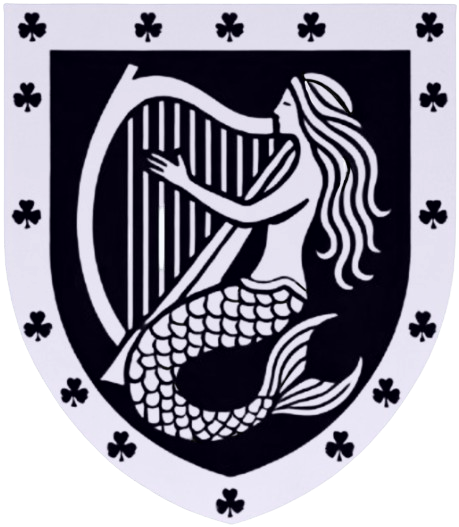Fergus & Maria Lord & Lady Kinfauns
About
Fergus, Lord Kinfauns
Commane · Taoiseach, Chief of Clan Ó Comáin
KINFAUNS Fergus Christopher Commane (The Much Honoured Lord Kinfauns, 26th baron) landowner of Newhall House and Estate, custodian of Killone Abbey and the Holy Well of St John the Baptist, County Clare, and keeper of the hereditary office of Admiralty of the Tay attached to the lordship of Kinfauns — also known locally as “The Panther” for flying, rather than driving, his Rolls Royce.
Lord Kinfauns was born Fergus Christopher Commane in 1953 at Newhall, County Clare, the youngest of eleven children to a farming family whose lands faced the great house that would one day become his home. Educated locally at St Flannan’s College, Ennis, he was raised in the heart of Munster with the lore and legacy of Gaelic Ireland deeply etched into his consciousness.
Like many of his generation, he emigrated to London in early adulthood, where he forged a distinguished career in business. A man of vision and conviction, he spent decades building the foundations of future success, all while keeping a watchful eye on Newhall Estate, determined to restore it to the care of his ancient line.
In 1984, he married in London — Maria, Lady Kinfauns — an accomplished business leader and former Governor of Maudsley and Bethlem Hospital School (2017–2019), who served as Managing Director of Site Masters PLC from 1987–2021. Together they have raised a family who share their passion for heritage, service, and the land.
In 2024, Fergus succeeded to the dignity, Lord Kinfauns, though he does not use the title in daily life. Originally granted in 1487 by King James III of Scots, and reaffirmed in 1608 by King James I of Ireland, the title is steeped in legend — some claiming an even earlier creation around 1340 for the French pirate-turned-knight Sir Thomas Charteris, who fought alongside Wallace and Bruce.
The title later merged with the prestigious Earldom of Moray, one of the original seven earldoms of Scotland. The Earl of Moray, a major landowner, devolved the honour upon the head of the Commane family as his favoured heir, in recognition of their acquisition of Newhall Estate. Under Scots law, early crown charters permitted certain titles to pass to nominated heirs — a provision invoked here in recognition of the family’s stewardship and cultural preservation efforts.
This baronial lordship has been held by an unbroken line of Roman Catholics. Lord Kinfauns himself remains a devout Catholic. The family’s succession continues this tradition, and symbolises a broader revival of Ireland’s Catholic identity. Notably, Lord Clare, who built Newhall House in 1650, was a staunch Catholic who lost his estates in exile. Fergus’s restoration of Newhall and its sacred sites represents a spiritual homecoming — honouring both faith and heritage.
His succession marked the revival of a distinguished Gaelic lineage, formally recognised in 2025 when Clan Commane was recognised by Clans of Ireland under the patronage of the President of Ireland. This affirmed the family’s nobility within Gaelic Ireland, descending from rí kings of the Déisi Munster and the historic Chiefdom of Tulach Commain. His ancestors include Suibne mac Commán, king of the Déisi, and Ferchess mac Commán, a seer and warrior of the High Kings’ court, remembered for slaying the High King Mac Con — an act immortalised in the naming of the Rapids of Ferchess.
Fergus’s stewardship of Newhall has been transformative. Under his leadership, the estate is being revived as a centre of wellness and cultural heritage — honouring the spiritual traditions of its sacred sites and restoring Killone Abbey and its holy well to public reverence.
He is a a passionate advocate for the protection of Ireland’s built and natural heritage. His mission is not only to preserve the past, but to shape a future where the traditions of Gaelic Ireland are given new life.
His interests include architectural preservation, hurling, Irish folklore, spiritual pilgrimage sites, vintage Jaguars, and Clare’s natural wilderness. Though he travels occasionally, he remains most at home walking the woods and fields of the land he fought so long to reclaim for his family — and his people.
